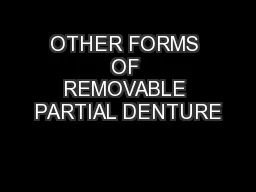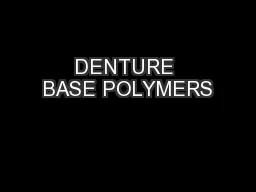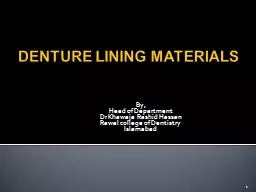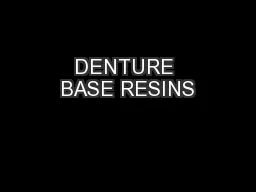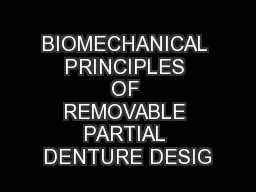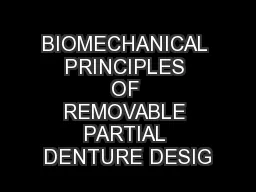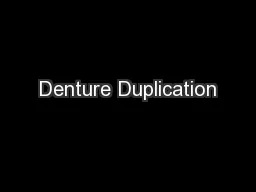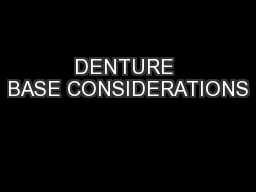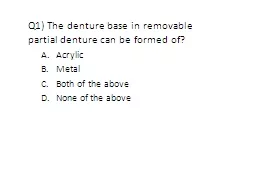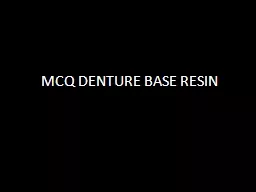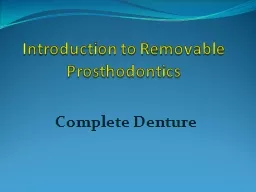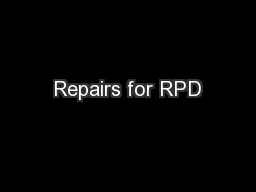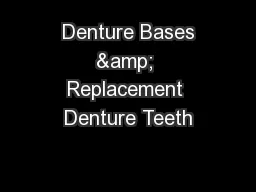PDF-6CHAPTER 6DENTURE BASESDEFINITIONA denture base is that part of adent
Author : bethany | Published Date : 2022-09-02
6materials metal and plastic are verysatisfactoryThere are two types of RPD denturebases 1 metal and 2 plasticTHE METAL DENTURE BASEThe metal denture base Fig 61
Presentation Embed Code
Download Presentation
Download Presentation The PPT/PDF document "6CHAPTER 6DENTURE BASESDEFINITIONA dentu..." is the property of its rightful owner. Permission is granted to download and print the materials on this website for personal, non-commercial use only, and to display it on your personal computer provided you do not modify the materials and that you retain all copyright notices contained in the materials. By downloading content from our website, you accept the terms of this agreement.
6CHAPTER 6DENTURE BASESDEFINITIONA denture base is that part of adent: Transcript
Download Rules Of Document
"6CHAPTER 6DENTURE BASESDEFINITIONA denture base is that part of adent"The content belongs to its owner. You may download and print it for personal use, without modification, and keep all copyright notices. By downloading, you agree to these terms.
Related Documents


